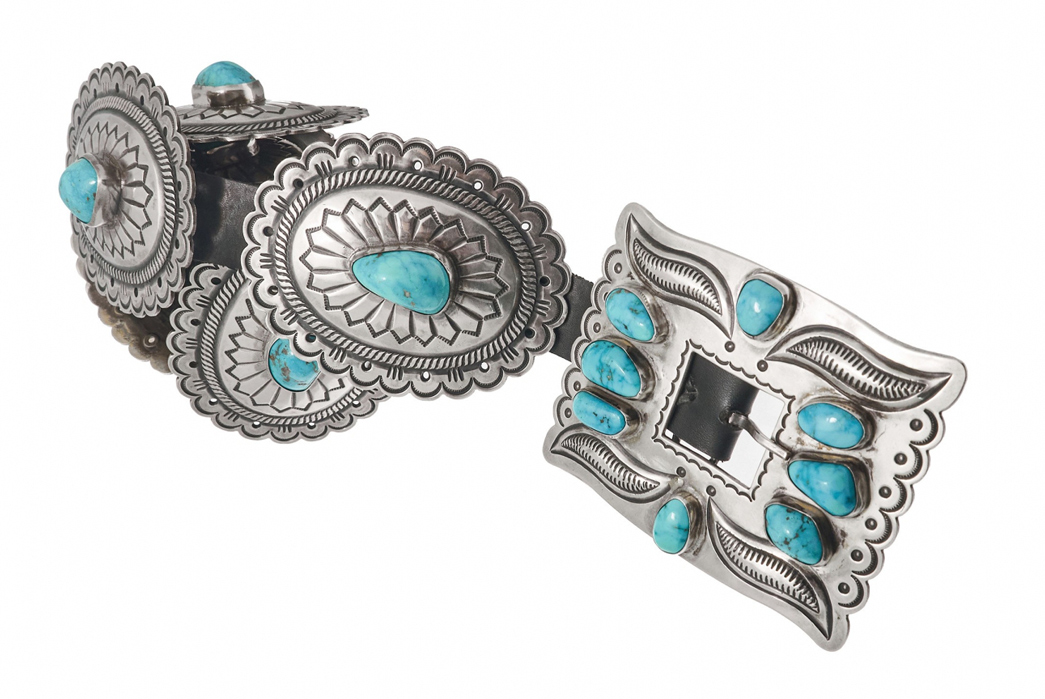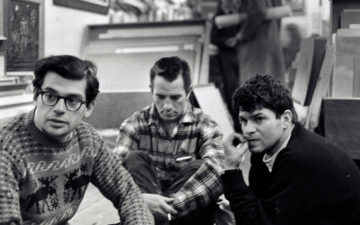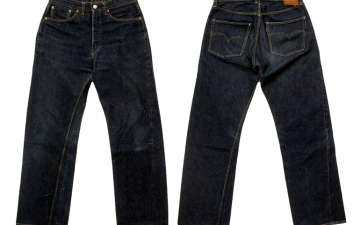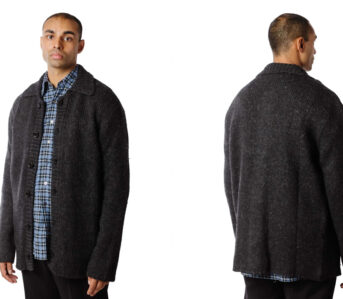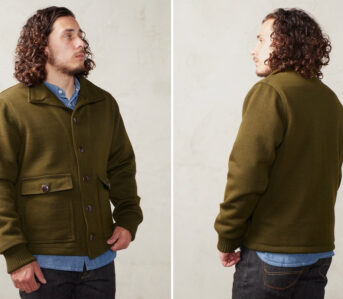The story of conchas (also known as conchos) represents the complex cultural interchange between Native American tribes and the Europeans who overtook their land. Silversmithing techniques were introduced to Native Americans in the nineteenth century by Spanish colonists. Navajo tribes — who already possessed a rich history of metalworking — quickly incorporated silver using the minted Spanish coins as the most readily available source. Silver conchas became important cultural artifacts that represented individual artists, areas, and tribes.
During the late nineteenth century, American settlers in the Western United States appropriated conchas for their stylistic beauty while ignoring the cultural significance of the individual pieces. And while these pieces of intricately adorned silver have had their time in the limelight through icons like Jim Morrison and Ralph Lauren, efforts to shine a light on the history and cultural significance of conchas have not followed.
In this piece, we’re taking a dive into the history of the concha, covering their first known origins, developments through the decades, and relevance in our niche today.
What are Conchas?
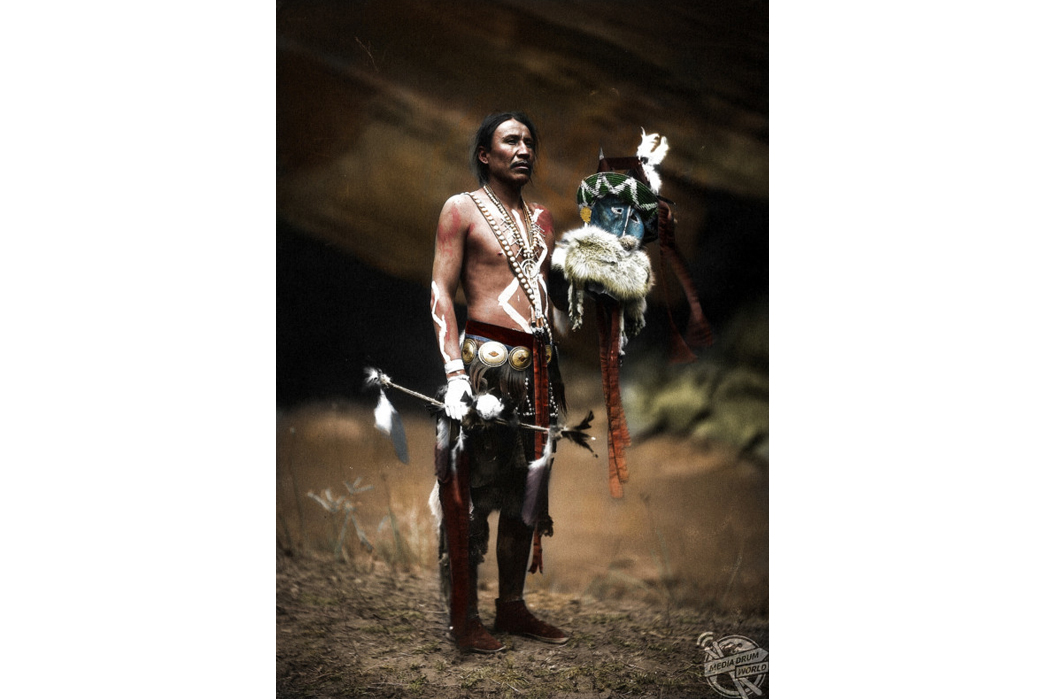
A colorized image from the late 1800s of a Navajo warrior in traditional garb, including a first-phase concha belt. Image via Medium Sized Drum.
Conchas are round Native American jewelry that date back to the 1860s. Distinguishing features are the convex details created in a circular or symmetrical pattern and serrated or feathered edges. Because these details make the round emblems look like shells, the Spanish inhabitants of North America called them conchas – Spanish for shells. Though many native tribes use the variation concho, ending with an “o” instead of an “a,” the two terms are interchangeable today.
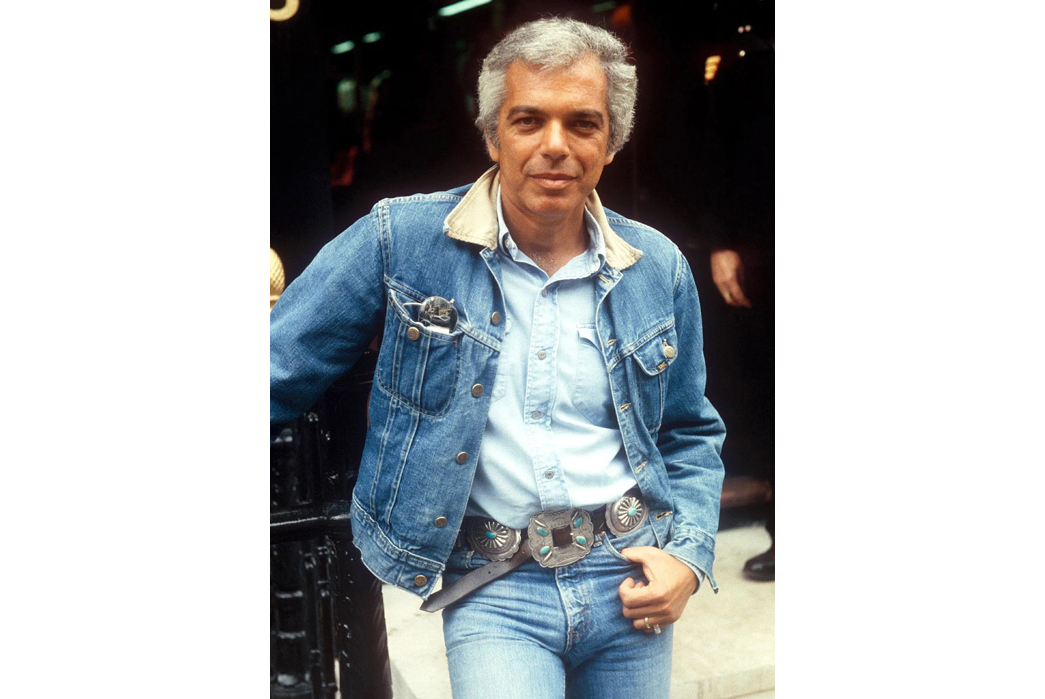
Ralph Lauren in a concha belt. Image via Richard Young/Rex USA.
Traditionally, each piece was handcrafted by a skilled metal worker using an open fire to heat the metal and a hammer and specially crafted punches to indent the designs. Each artist would handcraft their own punches which would produce unique designs defining that specific artist, like a signature. While early pieces were made of solid silver, turquoise, and other precious stones were incorporated by the early 1900s.
History in Native American Culture: 1860s – 1960s
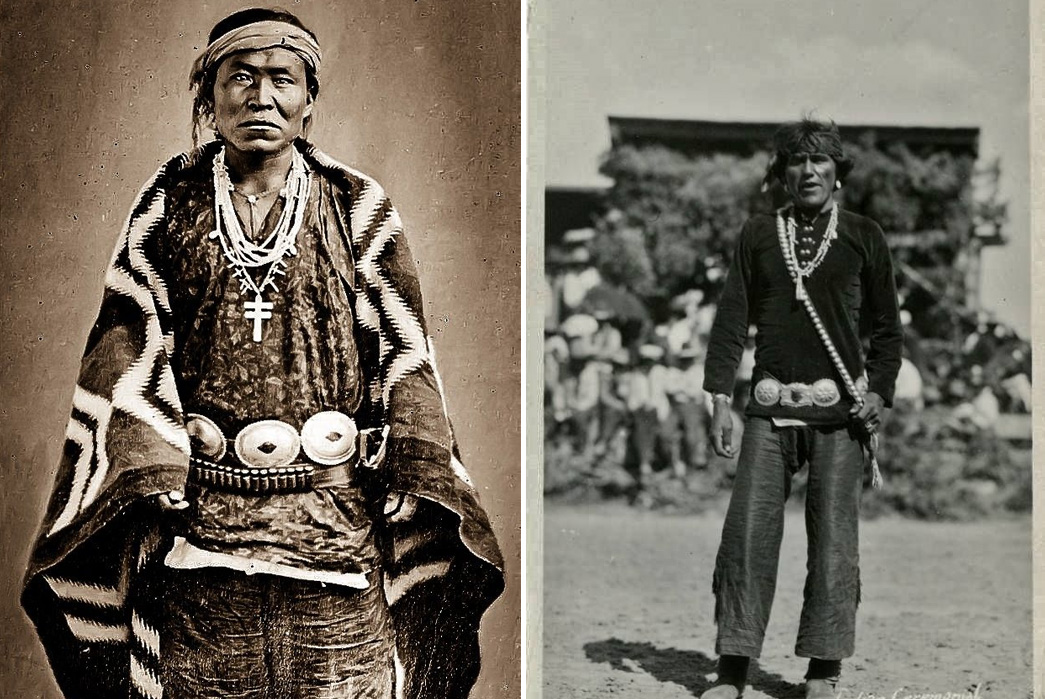
Two historical images of Navajo men wearing concho belts. Images via Pinterest.
Experts in Native American culture divide the history of conchas down into three separate phases. The story begins with a Navajo smith named Arsidi Chon — which translates to “Ugly Smith” — living in the Southwestern United States. In the 1860s, Chon began making decorative pieces out of Spanish silver coins. He fired and pounded the coins into a shell-like shape before adding serrated edges and imprinting symmetrical patterns. At the time, Navajo tribes had a rich heritage of metal smithing dating back centuries but they had only recently begun working with silver. Spanish silver coins were the most readily available source of silver so most initial Navajo silver jewelry were re-worked coins.

A First Phase Concha with triangular holes via Shiprock Santa Fe.
Native smithing techniques were passed on orally from master to apprentice and from one artisan to another. It was in this way that smithing silver coins into conchas spread through the American Southwest in the late nineteenth century. Originally, two triangular holes were cut out of the pieces to run a leather strap through, allowing it to be attached to belts and other clothing. Pieces that use this pass-through technique are categorized as First Phase conchas (see image above).
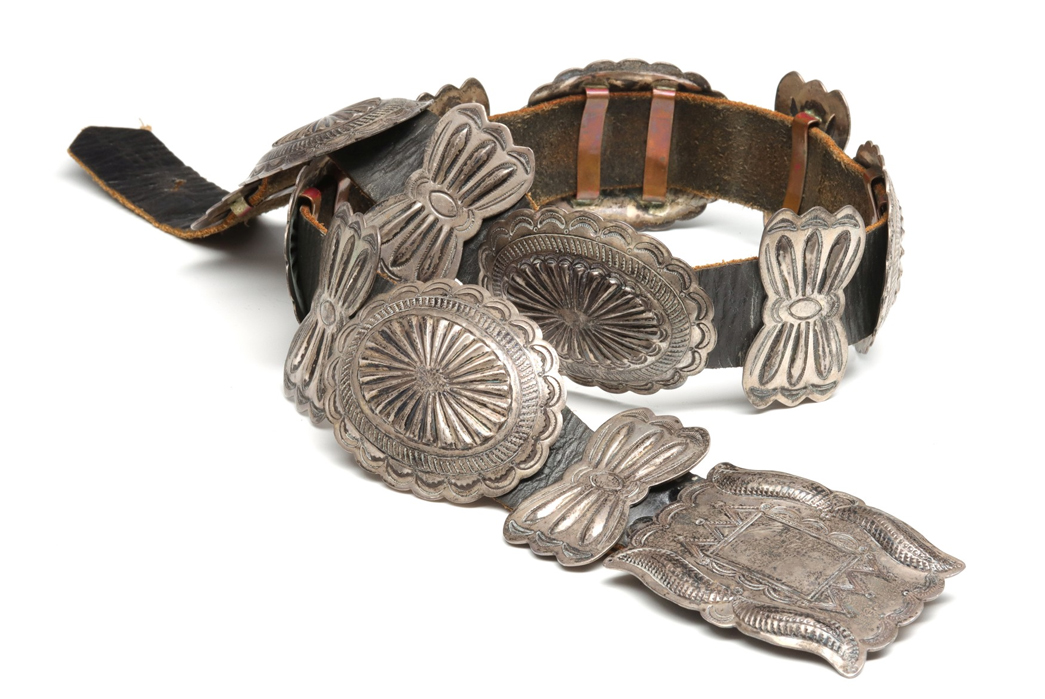
A vintage silver concha belt with the soldered copper bands visible on the back. Image via Wild Moon Marketplace
By the late 1800s, Native smiths learned soldering techniques from Spanish metalworkers. This method of attaching one piece of metal to another allowed them to add copper or silver strips to the back of conchas. With punched holes no longer required to pass leather bands through, Native smiths were now free to use the entire surface of the concha as their canvas. Thus began the Second Phase of silver concha jewelry.
It was at this time, in the late 1800s and early 1900s, that Native silversmiths began to incorporate turquoise and other precious stones. The use of conchas also spread into other forms of jewelry like necklaces, cuffs, and earrings. Conchas were also used as ornamental additions to leather goods like bags, saddles, and footwear. Turquoise was readily available in the American Southwest at the time and it became the signature stone of Navajo and other tribes indigenous to the area. Turquoise is now a quintessential component of concha jewelry and ornaments of all kinds.
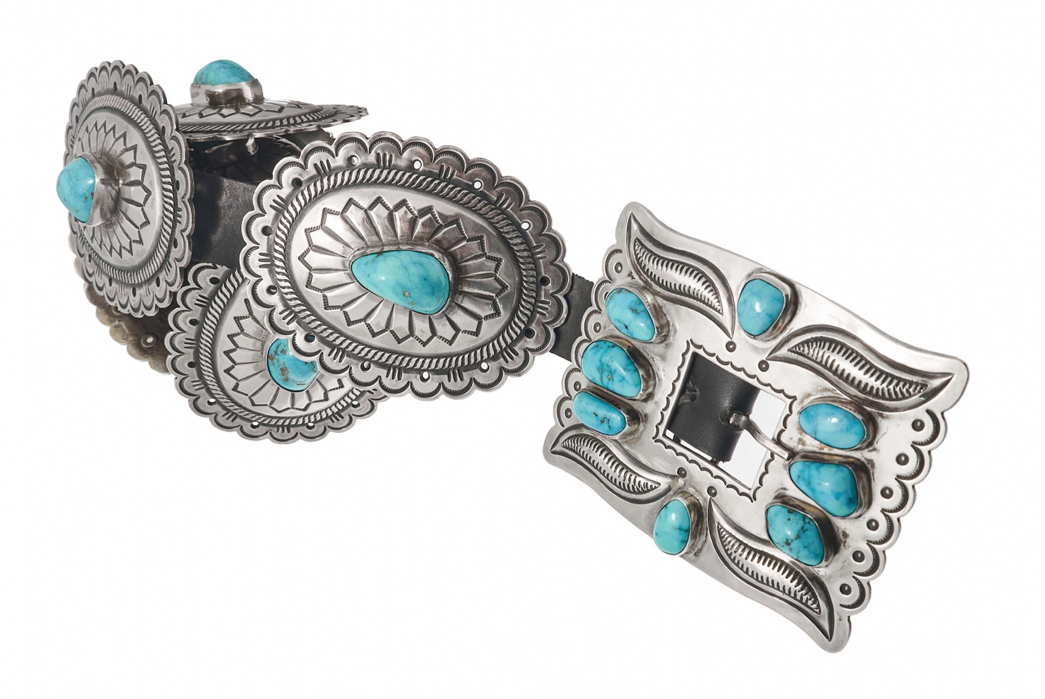
A turquoise and silver concha belt with a butterfly buckle. Image via Harpo Paris.
The appearance of butterfly conchas in the 1930s —which ditched the distinctive shell shape for a rectangular shape with rounded corners — marks the beginning of the Third Phase in concha history. Concha fabrication had evolved significantly by the early 1900s. With access to raw silver sheets, silver coins were no longer necessary, and much larger and more elaborate pieces could be constructed. This also allowed for the construction of large ornate belt buckles, which became a fundamental feature of concha belts. Third Phase artistry set the standard that exists to this day for concha jewelry, especially the alternating shell and butterfly pattern.
History in Fashion: 1960s – Present
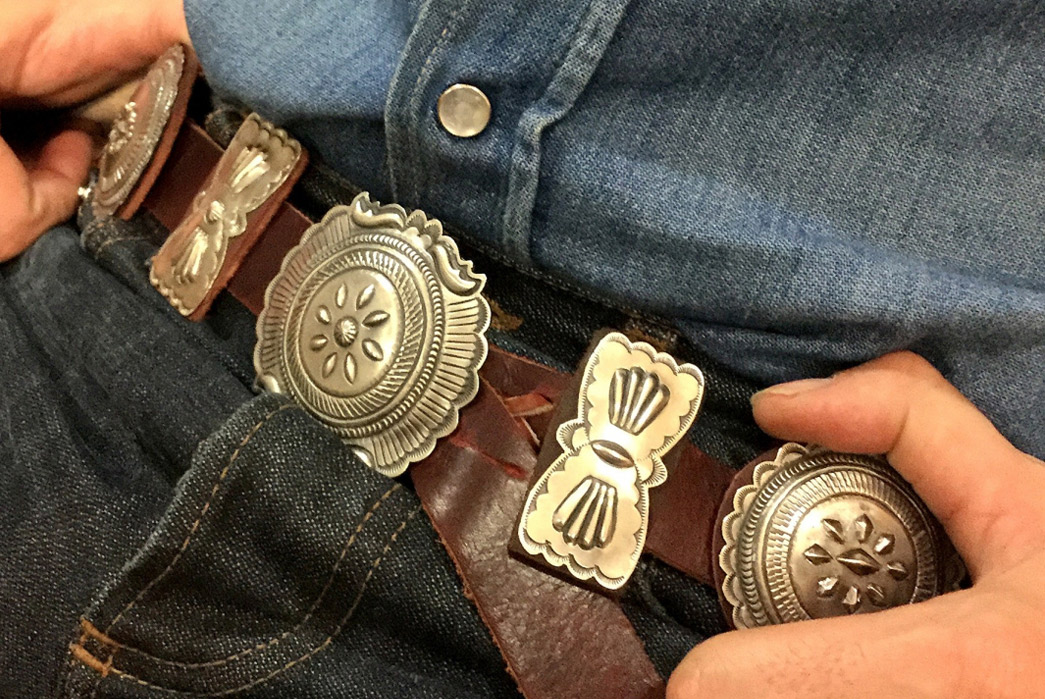
A modern replica of Third Phase concha belt. Image via Harpo Paris.
Not long after being invented in the 1860s, American settlers in the Southwest started wearing concha jewelry. Concha belts became a favorite among Mexican and American cowboy culture. Concha ornaments were used to decorate saddles, hats, vests, bags, and chaps. The Navajo and other tribes would trade concha pieces to the settlers for various goods, making them a favored form of currency. The significance of details indicating specific artisans, tribes, and areas were lost on the settlers. To them, conchas just looked cool and became fashionable.
For nearly a century, concha decoration existed exclusively as Native American heritage alongside cowboy and ranch culture. It wasn’t until the 1960s that concha belts and jewelry entered popular fashion through the hippy movement and rock’n’roll. The acknowledgment of Native American culture through the adoption of their clothing and accessories became a big part of American hippie culture in the 1960s. Items like beaded headbands, fridge leather vests, woven blanket jackets, and hide satchels became popular fashion along with concha ornaments. Jim Morrison of the Doors is credited with introducing the concha belt to rock’n’roll style. The mercurial singer wore the decorative belts on stage, often with leather pants, starting in 1967. He was also a fan of Native American bead necklaces.
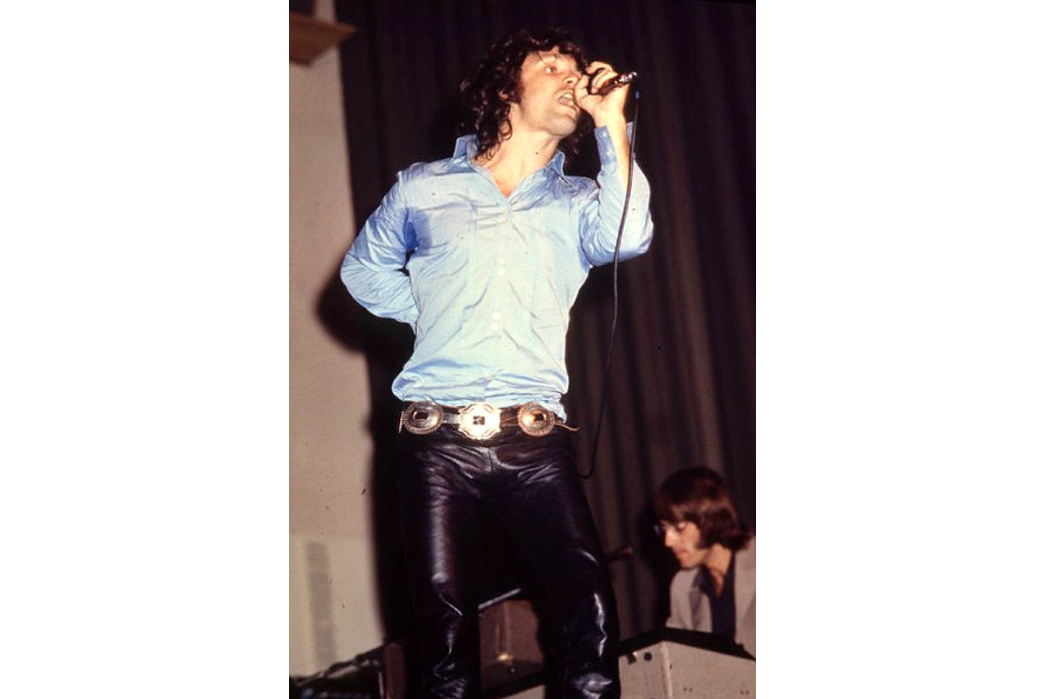
Jim Morrison wearing a First Phase concha belt on stage in 1971. Image via Sounds of 71.
A decade later, Ralph Lauren started wearing concha belts when he embraced Southwestern cowboy fashion in the 1970s. Lauren is credited with intertwining English tailoring and gentry fashion with American workwear and cowboy style for the first time. This unorthodox but somehow congruous mixture has remained a staple of menswear to this day. A bulky, Turquoise encrusted concha belt over boot-cut jeans works perfectly with an English tweed blazer and oxford shirt to this day, thanks to Lauren.
The denim, leather, and Native American-influenced fashion of the old American West had a moment in popular fashion first in the late 1970s and then again in the early 1990s. Both times, concha belts and jewelry saw spikes in popularity. By this time, the pieces were being mass-produced out of cheaper metals like polished brass in the best case and tin or cheap plated copper in the worst case. These pieces were designed by Americans who were copying original pieces or even just old pictures. No attention was paid to the cultural history of conchas or the significance placed on each little detail as a marker of distinctive artists.
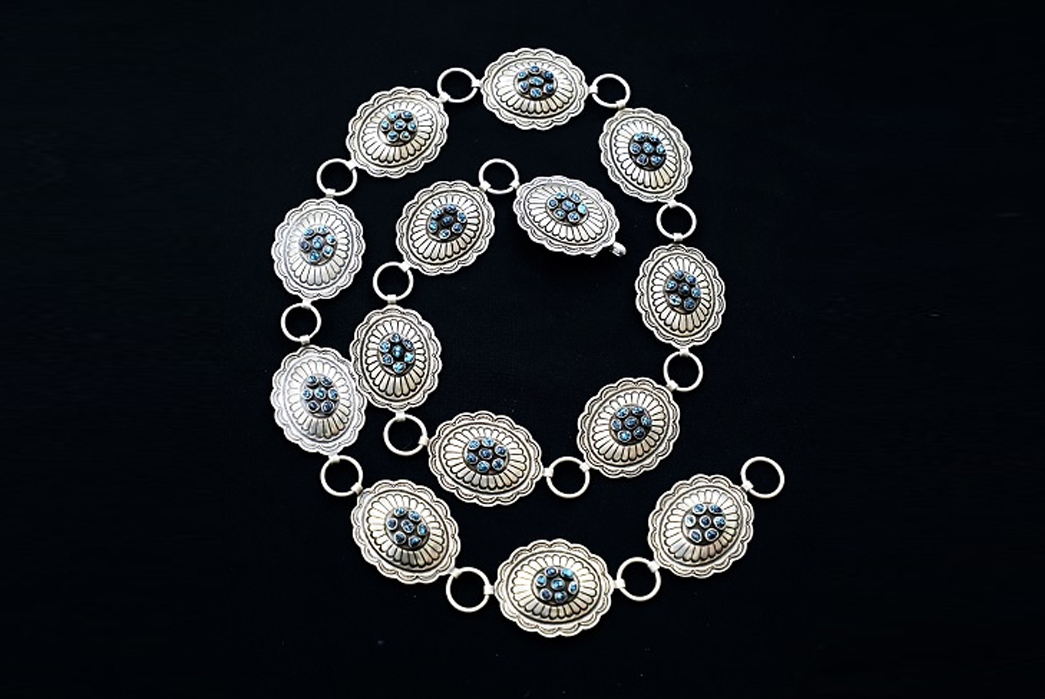
A Navajo concha link belt. Image via Journal of Antiques.
Unfortunately, even though conchas have seen multiple periods of popularity, little effort has ever been given to tracking and retaining the names, dates, and places tied to the original manufacturing of concha jewelry. Many original pieces are still in circulation dating back to the late 1800s and early 1900s but little to nothing is known about the skilled craftsmen who created these works of art. Pieces weren’t signed in a traditional way and almost no one is left today who can decipher the meanings behind the ornate details on original conchas.
Conchas Today
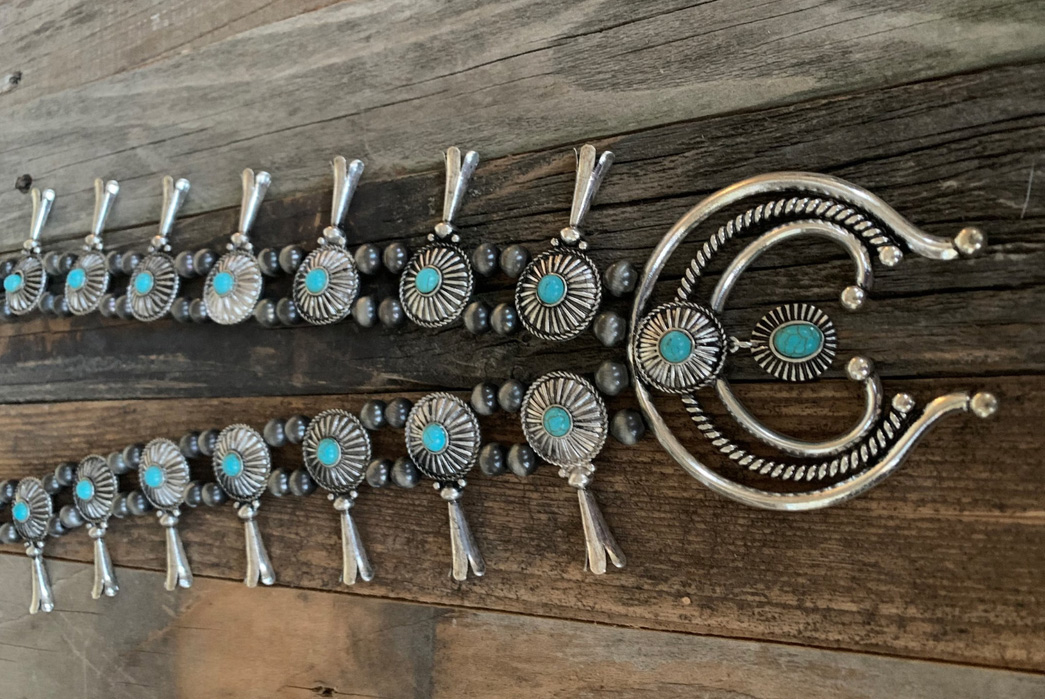
A modern squash blossom concha necklace available on Etsy. Image via Willow Creek Boutique.
Even with so many details behind the rich heritage of conchas lost to history, so many artists whose names we will never know, we can still appreciate the ornaments as an important piece of a nearly extinguished culture. Few artists are left today who carry on the smithing traditions passed down from master to apprentice for countless generations, but they are out there making concha and other jewelry. Japanese craftsmen are paying homage to the Native tradition by making some great concha jewelry out of polished brass. American brands like RRL and Rockmount Ranch Wear offer genuine articles made with the highest quality materials.
Arizona and New Mexico are home to most of the remaining Navajo silversmiths. Making the pilgrimage to cultural centers like Albuquerque, New Mexico, and Prescott, AZ will reveal a wealth of concha jewelry and other Native American artistry. For those who can’t make it, there are plenty of sources online. Many of the stores in the American Southwest that sell authentic conchas by Native American artists have web stores. Just keep in mind that buying the real deal is costly – like $1,000 to $4,000 – because you are buying a handcrafted work of art made from silver and precious stones. When you wear a concha belt, recognize it for its beauty along with the proud heritage that it represents, and do your part to keep that heritage alive.
Where to find Authentic Concha Jewelry
Where to find Reproduction Concha Jewelry
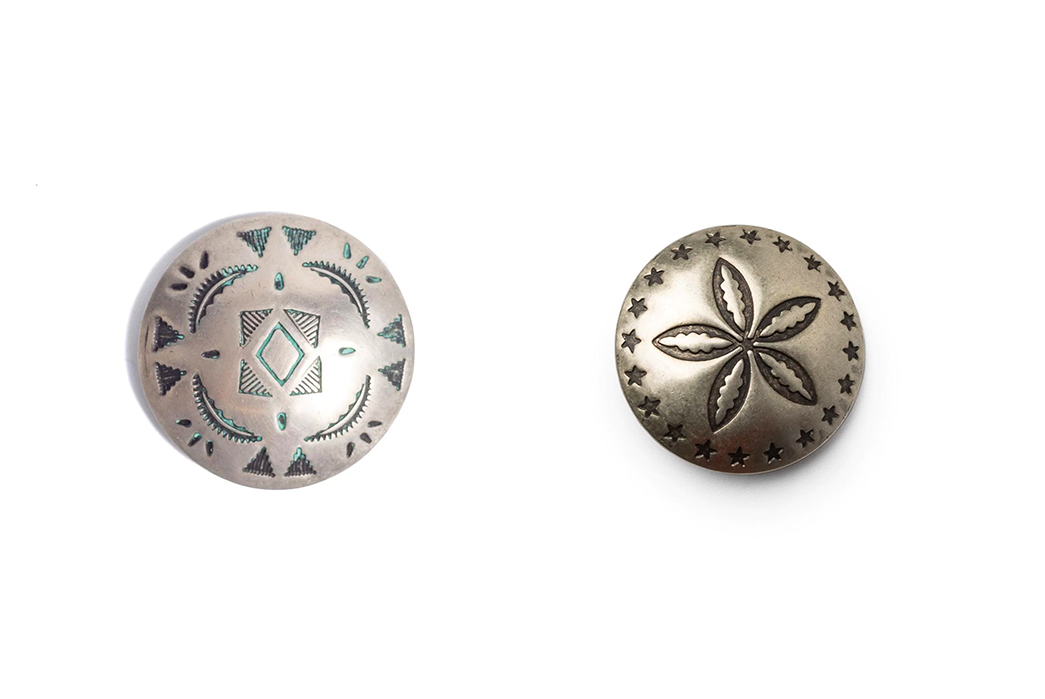
Yuketen Silver Concho Pin, available for $39 from Clutch Cafe.
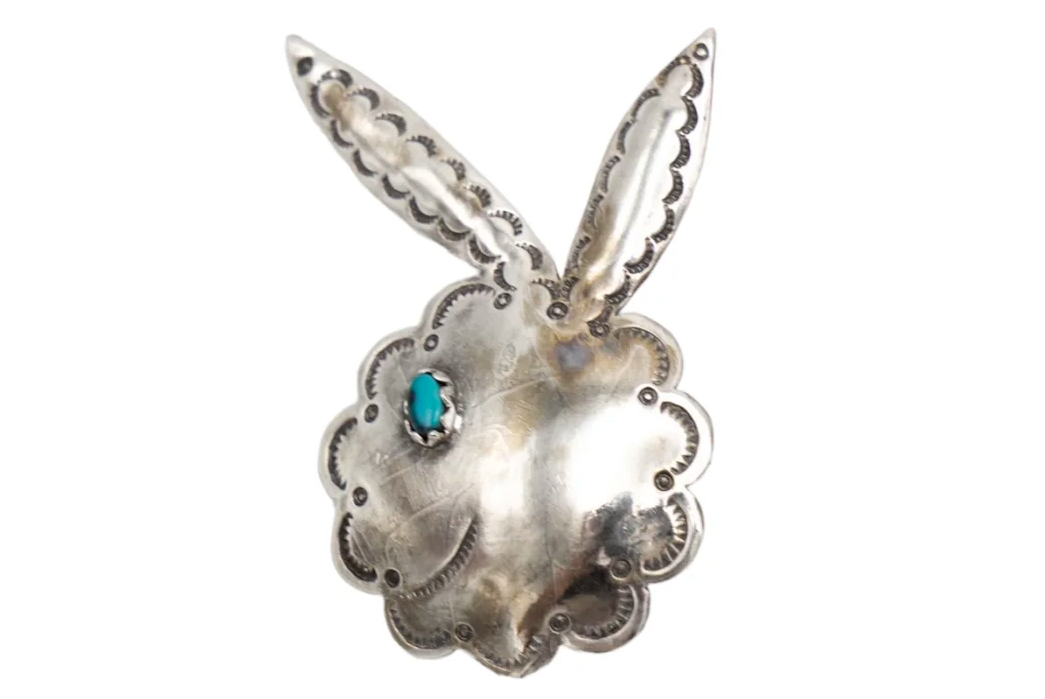
Kapital Concho Pin, available for $167 from Blue in Green.
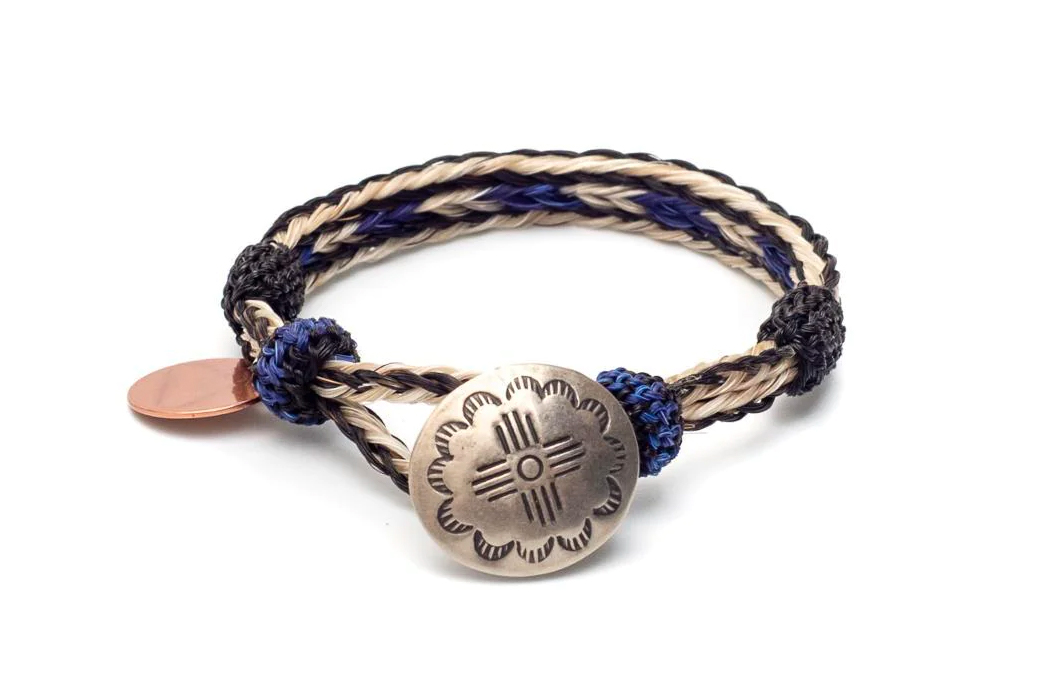
Chamula Concho Bracelet, available for $50 from Clutch Cafe.

